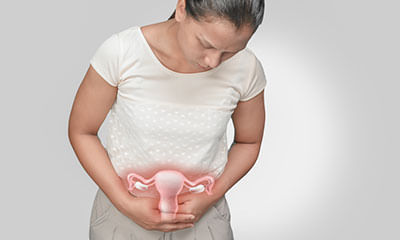Medicine For Endometrial Cancer
Hi, my mother, 52, is post-menopausal, obese (91. 1 kgs), recently hypertension (bp 120/80 with meds) has a case history ...
Ask Free Question
Dear lybrate-user ji regarding your mom's case, bleeding per vaginum post menopausal may be due to atrophic vaginitis that occurs to such ladies in 4-5 years after menopause. Other reasons can be cervical polyps, uterine hyperplasia (ruled out be tvs). Let us wait for endometrial biopsy and get the results. Other symptoms are just psychological due to anxiety. I would like to have a chat with you first and if possible, pls connect via a pvt chat. Have a nice day!
My mother is 55, is suffering from extreme bleeding from the last two weeks. She had her menopause last year, however, t ...
Ask Free Question
Hi! post menopausal bleeding is defenitily a concern. It wil be easier to guide if you can share your scan reports and biopsy reports. As your biopsy is normal you need not worry much. Sometimes morena insertion can cause bleeding, you can wait for a wk n see how your mom is responding to d prescribed regesterone. Hope she recovers soon.
Hi, i've pcod since I was 15. I'm 158 cm tall, weigh 64 kg, age 27 years. I took krimson 35 pills, ovaflo sr, metformin ...
Ask Free Question
Hi in pcod you have to take medicine for long time so it remains in control. Regular exercise is must. You had your pds in april 2020 take tab deviry 10 once daily for 5 days. You will get pds within 15 days contact me afer pds for further treat thru ugh librate.
I'm a breast cancer survivor. Dx with papillary carcinoma and dcis in july 2018. Staging and grade were questionable due ...
Ask Free Question
Tamoxifen may cause thickening of the lining of uterus, which may cause heavy bleeding at times. It may help to see your gynaecologist, who may suggest for a d&c (dilatation and curettage) procedure, before being sure of what we are dealing with and how to delay with it. For any further queries, please contact.
My mother's, 47 years old, usg report is such. All things are okay except uterus. It is such: it is bulky in size and el ...
Ask Free Question
Once you send full report of that one our clinic private inbox if try for without surgery medicine minimum 45 days in any change in bulky uterus then continue medicene. Once you consult online for details.
Hi doctor, i'm 44 years now. For the last 2 months i'm suffering from prolonged bleeding. Ultrasound diagnosed a clear r ...
Ask Free Question
Hi mam. You are 44 years which means you can have menopause nearing. If its small fibroid and endometrial tissues are rule out for cancers, you can push your years with advanced treatments without surgery, because your uterus tends to reduce in size even if it has fibroids post menopause. As allopathic doctors give medicines which are done after trivial clinical trials and experiments you are aware of the benefits, side effects etc in any given allopathic medicine. If a tablet is having so many side effects listed, it doesn't mean it has to happen for you and also it is given basically to treat your condition. As a practitioner of allopathic medicine we can not comment on ayurveda or any other medicine. Make sure its done good research on those tablets and you can choose either one of them.
Hello doctor, I am diagnosed with adenomyosis and suffering with a lot of pain in periods from past 4 years. Am unmarrie ...
Ask Free Question
Dear lybrate-user ji, yes. There is a permanent cure in homeopathy. When a tissue of lining of uterus (endometrium) grows on other pelvic organs like, ovaries, fallopian tunes etc. Is called as endometriosis. It includes: -painful periods (dysmenorrhea) -pain with intercourse -pain with bowel movements or urination -excessive bleeding. You may experience occasional heavy menstrual periods or bleeding between periods (inter menstrual bleeding) -infertility -fatigue, diarrhoea, constipation, bloating or nausea, especially during menstrual periods. It may be due to: -retrograde menstruation: in retrograde menstruation, menstrual blood containing endometrial cells flows back through the fallopian tubes and into the pelvic cavity instead of out of the body -surgical scar implantation -immune system disorder -early menarche -over use of hormonal pills that obstruct normal menstrual flow etc. Homeopathy has got complete cure for these kinds of complaints by constitutional treatment and holistic approach. Homeopathic medicines help to resolve the underlying cause. I suggest you to take an appointment for consultation so that detail case can be discussed and rule out the cause and proceed further for treatment. You can consult me online. Thank you.
I am 31 years old breastfeeding mother. I had irregular periods since onset & ws told by going. Its hormonal imbalance. ...
Ask Free Question
Hello, 30MM is endometrial hyperplasia and biopsy is required to rule out atypic or endometrial cancer.
Recently I had menses problem so I went to a doctor. He asked me to do usg of whole abdomen. I did so. And the result sa ...
Ask Free Question
Hi, It means you have CYST in Your OVARIES- PCOD: Ovarian Cysts: Ovarian cysts are fairly common. They are fluid-filled sacs that form in or on a woman's ovaries. Symptoms of ovarian cysts depend to a large extent on the size of the cyst. Many ovarian cysts produce no symptoms. Large or ruptured ovarian cysts can cause symptoms including pain, pelvic pressure or discomfort. Some types of ovarian cysts (polycystic ovary syndrome and cysts related to endometriosis) may make it more difficult for a woman to get pregnant. Simple ovarian cysts (functional cysts) can sometimes be seen during pregnancy. Dermoid cysts and other types of cysts can also occur in pregnant women. The sudden onset of severe pain is the characteristic symptom of a ruptured (burst) ovarian cyst. Ruptured dermoid cysts may require surgery due to irritation of the internal organs from the contents of the cyst. Larger cysts may require surgery to remove the cyst or a biopsy to rule out cancer. TYPES OF CYSTS: What Are the Types of Ovarian Cysts? The most common types of ovarian cysts are: Follicular cyst: A follicular cyst is simple cyst can form when ovulation does not occur or when a mature follicle involutes (collapses on itself). A follicular cyst usually forms at the time of ovulation, and can grow to about 2-3 inches in diameter. The rupture of this type of cyst can create sharp severe pain on the side of the involved ovary. This sharp pain (sometimes called mittelschmerz) occurs in the middle of the menstrual cycle, during ovulation. About one-fourth of women with this type of cyst experience pain. Usually, these cysts produce no symptoms and disappear by themselves within a few weeks or months. Corpus luteum cyst: A corpus luteum cyst is a functional ovarian cyst that occurs after an egg has been released from a follicle. Following ovulation, the follicle becomes what is known as a corpus luteum. If a pregnancy doesn't occur, the corpus luteum usually breaks down and disappears. It may, however, fill with fluid or blood and persist on the ovary. Usually, this cyst is found on only one side and produces no symptoms. Hemorrhagic cyst: A hemorrhagic cyst is a functional cyst that occurs when bleeding occurs within a cyst. Symptoms of this type of cyst is abdominal pain on one side of the body. Dermoid cyst: A dermoid cyst is a benign tumor sometimes referred to as mature cystic teratoma. It is an abnormal cyst that usually affects younger women and may grow to 6 inches in diameter. A dermoid cyst can contain other types of body tissues such as fat and occasionally bone, hair, and cartilage. The ultrasound appearance of this type of cyst can vary because of the spectrum of its contents, but a CT scan and magnetic resonance imaging (MRI) can show the presence of fat and/or dense calcifications. These cysts can become inflamed. They can also cause the ovary to twist on a stalk (a condition known as ovarian torsion), compromising the blood supply and causing severe abdominal pain. Endometriomas or endometrioid cysts: Endometriomas or endometrioid cysts are a manifestation of the condition known as endometriosis, this type of cyst is formed when endometrial tissue (the lining tissue of the uterus) is present on the ovaries. It affects women during the reproductive years and may cause chronic pelvic pain both associated with, and remote from, menstruation. Endometriosis is the presence of endometrial glands and tissue outside the uterus. Women with endometriosis may have problems becoming pregnant. Endometrioid cysts, often filled with dark, reddish-brown blood, may range in size from 0.75-8 inches. Due to the color of the old blood frequently found within the cysts, they have been referred to as "chocolate cysts. Polycystic ovaries: A polycystic ovary is diagnosed based on its enlarged size - usually twice that of normal - with many small cysts underlying the surface of the ovary. This condition can be found in healthy women and in women with hormonal (endocrine) disorders. An ultrasound may be helpful in diagnosing this condition. Polycystic ovary is different from the polycystic ovarian syndrome (PCOS), which includes other symptoms and physiological abnormalities in addition to the presence of ovarian cysts. Polycystic ovarian syndrome involves metabolic and cardiovascular risks linked to insulin resistance. These risks include impaired glucose tolerance, type 2 diabetes, and high blood pressure. Polycystic ovarian syndrome is associated with infertility, abnormal bleeding, increased incidences of miscarriage, and pregnancy-related complications. Polycystic ovarian syndrome is extremely common and is thought to occur in 4%-7% of reproductive age women. PCOS also is associated with an increased risk for endometrial cancer. Other tests other than ultrasound are required to diagnose polycystic ovarian syndrome. Cystadenoma: A cystadenoma is a type of benign tumor that develops from ovarian tissue. They may be filled with a mucous-type fluid material. Cystadenomas can become very large and may measure 12 inches or more in diameter. Ovarian cancers: Most ovarian cysts are benign (non-cancerous); however, rarely, ovarian cysts may be related to ovarian cancers. So once consult a gynaecologist she can rule out whether it's a normal cyst or what? According to cyst size, then she advise medication. Best take homeoathy treatment for permanent results.
Sir, My mother aged 67 yrs, has been detected from carcinoma endometrium, 3a, had undergone surgery. And is advised chem ...
Ask Free Question
Chemo and radiation are today's most reliable treatment but with lots of side effects specially at this age of patient. There are medicines in homoeopathy but the treatment plan in homoeooathy is less reliable than chemo and radio. So plz go for chemo and radio and for covering up their side effects, homoeopathy can help you surely.





